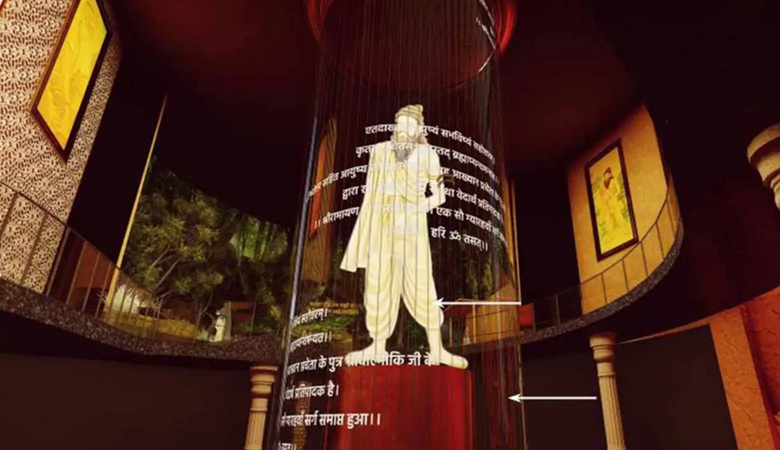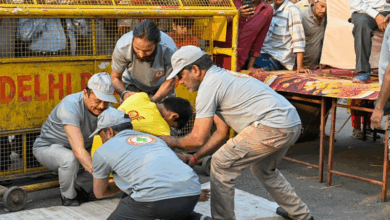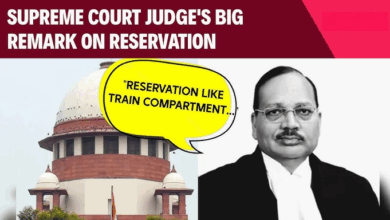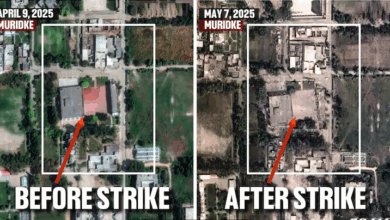In the shadow of Ram Mandir, another enormous project is taking shape: Ram Katha Museum: Bringing the Past and Present to Life
News Mania Desk / Piyal Chatterjee / 11th January 2025

A holographic representation that animates Lord Ram, an engaging experience exploring the happenings of the Ramayana, and a segment detailing the 200-year Ram Temple movement. With just days to go before the first anniversary of the Ram Mandir inauguration, a plan has been solidified for another significant site in Ayodhya — the Ram Katha Museum, set to be located in the old sangrahalaya (archives) building, 4 kilometers from the temple.
The museum, intended to display discoveries from archaeological digs to provide “tangible proof of the temple’s historical origins,” will cover over 40,000 square feet and will be the second-largest destination in Ayodhya upon completion, as per sources. The project is currently at the concept and design phase, after which a detailed project report (DPR) with architectural drawings will be completed. Although the building is owned by the state government, financing for the project will come from the temple trust, which is expected to be finished within the next two years. Many artefacts and items linked to the ancient temple were discovered during the excavations at the site, carried out by the Archaeological Survey of India (ASI) under the oversight of the Supreme Court. More than 100 items, such as pieces of statues, columns, and wall fragments, were found. These results offer significant proof of the presence of an ancient temple at the location. “The museum will showcase several of these,” Bhaik stated.
In addition to presenting results from archaeological digs that will offer “tangible proof” of the temple’s historical origins, it will also feature archival documents outlining the development of the movement. “By incorporating these elements, the museum aims to showcase the historical and cultural significance of the Ram Temple while also reflecting the sentiments and commitment of those who played a role in this remarkable legacy,” stated Bhaik.
Covering three levels – lower ground, ground, and first – the museum will be divided into 26 parts, each providing a distinct viewpoint on the life and legacy of Lord Ram, according to the plan. Enhancing these areas will be a projection mapping exhibit on the front of the museum. After an introductory part presenting an overview of the museum’s features, the ‘Ram Darbar’ segment will present a holographic representation of Lord Ram’s court; followed by ‘Ikshwaku Vanshavali’, which illustrates the lineage of his family; ‘Sabke Ram’, which highlights his era through various narratives; a segment on Ram Katha in different nations; ‘Ram Van Path’, a ramp decorated with images of places he visited during his banishment; and ‘Maharshi Valmiki’s Holobox’, which will showcase the Ramayana and Yog Vasistha through engaging 3D displays.
Currently, there is a dedicated section focused on the architecture of the new Ram Temple; ‘Sri Ram Janmabhoomi Sangharsh Yatra’, documenting the Ram Janmabhoomi movement’s journey; a segment on Ayodhya’s history presented through a holographic display; ‘Odyssey of Hanuman’ from IIT-Madras, illustrating Lord Hanuman’s journey; and a live view of Ram Lalla from the Garbh Griha of Shri Ram Mandir. Additionally, there will be occasional temporary exhibitions.
The initiative seeks to take visitors on a journey through time utilizing immersive technologies such as AR, VR, and AI. The centerpiece will be a hyper-realistic statue of Lord Ram that features detailed hand movements and can talk, providing an engaging experience. “The objective is to offer guests an engaging experience of the Ramayana, making it feel as though they are observing the occurrences as they happen,” Bhaik stated.
Regarding the sources of the temple movement, Bhaik stated that it is a thoroughly documented case by the Supreme Court, which included the Nirmohi Akhara, the Vishwa Hindu Parishad, and the Sunni Waqf Board. “This movement outlines a 200-year journey starting in 1822, including significant legal, cultural, and historical milestones,” he stated. “The narrative of this movement will incorporate insights from specialists in different domains to guarantee historical accuracy and sensitivity, undergoing comprehensive review and approval.” At the same time, according to the temple construction committee, the building of the first and second floors, including the temple’s shikhar and other important temples, has reached its final stage, with a target completion date set for June this year. The temple was inaugurated on January 22 of the previous year, and the trust is commemorating the first anniversary of the pran pratishtha ceremony on January 11, following the Hindu calendar.






